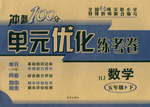
The Haitian tsunami gave scientists a chance to find out how well vital and potentially life-saving warning systems were working.
Noaa’s Pacific Marine Environmental Laboratory has developed a warning system that picks up signals of tsunamis directly from the sea-floor.
It is called Dart-the-Deep-ocean Assessment and Reporting of Tsunamis. If seismometers(地震仪) detect an earthquake, the Dart buoys(浮标) will determine what is happening to sea levels, and whether a big wave might be on the way. This information is then sent via satellite to a central location which can organize an alarm. Within 50 minutes of the Haiti earthquake, this system was able to issue an alarm to other countries in the Caribbean to say that a small tsunami had been caused to start, and that was unlikely to affect them.
Dr Bernard said, “The first 30 minutes following the earthquake, we have to rely on education.” The critical aspects of this are: do you feel the earthquake; do you see the ocean draw down; and do you hear that loud roar? If so, you should run for higher ground.
“But after the first few minutes, it’s crucial that we have the technology—the measurements to avoid unnecessary evacuation(疏散撤离) and tell people when it is safe to return.” Right now, there are 50 of these Dart buoys all over the globe—four of which are in the Caribbean.
Dr Bernard says that, with 75 to 100 buoys worldwide, this system could provide global tsunami warnings within one hour.
“That’s for everywhere we know that tsunamis have happened. If we wanted to go to half an hour detection, we could probably double or multiply by four times that number,” he said.
“In some countries, including Haiti, there may not be enough resources to support a specific tsunami warning centre for something that happens so infrequently.”
He said that this system was relatively inexpensive to fix and operate.
“To get it down to an hour for everywhere affected would cost $50m initial investment and then 10% of that to maintain it,” he said.
“That’s not a terribly expensive system considering the potential savings of lives.”
1 In which section would you probably read the passage in a newspaper?
A. Education and Society
B. Culture and Leisure
C. Science and Technology
D. Health and Medicine
2. How many buoys would at least be needed for global tsunami warnings within half an hour?
A. 150 B. 100
C. 75 D. 50
3. Which of the following can be inferred from the passage?
A. The system can warn people of the coming of tsunami directly after the earthquake.
B. We can’t escape the danger of tsunami within 30 minutes following the earthquake.
C. Each country can easily afford a tsunami warning centre though it seldom happens.
D. It’s worthwhile to spend money on the warning system for possible savings of lives.
4. Which of the following would be the best title for this passage?
A. Tsunami Assessment
B. Earthquake detecting
C. Disaster Warning System
D. Life Saving System
 冲刺100分单元优化练考卷系列答案
冲刺100分单元优化练考卷系列答案科目:高中英语 来源: 题型:单选题
查看答案和解析>>
湖北省互联网违法和不良信息举报平台 | 网上有害信息举报专区 | 电信诈骗举报专区 | 涉历史虚无主义有害信息举报专区 | 涉企侵权举报专区
违法和不良信息举报电话:027-86699610 举报邮箱:58377363@163.com